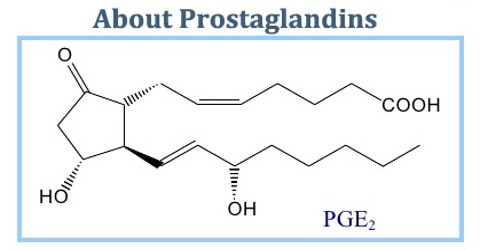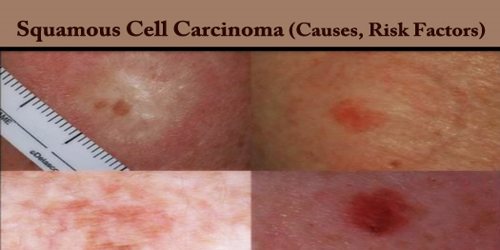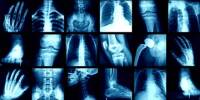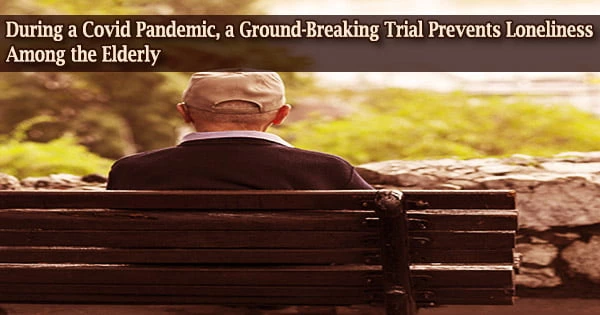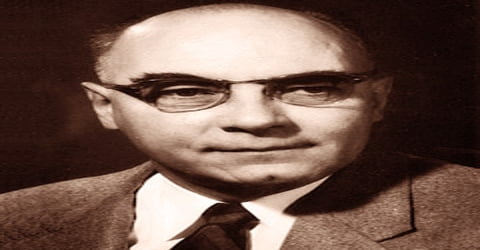About Prostaglandins (PG)
Prostaglandins (PG) are hormones created during a chemical reaction at the site where an injury or other issue occurs. They are unique among hormones because unlike most of the chemical messengers, they are not secreted from a gland, but rather are created at the time they are needed directly where the problem exists.
Prostaglandins are powerful locally acting vasodilators and inhibit the aggregation of blood platelets. Through their role in vasodilation, prostaglandins are also involved in inflammation. They are synthesized in the walls of blood vessels and serve the physiological function of preventing needless clot formation, as well as regulating the contraction of smooth muscle tissue. Conversely, thromboxanes, produced by platelet cells are vasoconstrictors and facilitate platelet aggregation. Their name comes from their role in clot formation (thrombosis).

Prostaglandins control several processes in the body, especially as it relates to the healing process. When tissue is damaged or infected, this group of hormones will create the reactions that cause pain, fever and inflammation, which sparks the healing process. Prostaglandins also stimulate the formation of a blood clot and the contraction of the blood vessel wall when your body is bleeding. Once blood clots are no longer needed and the injury begins to heal, another prostaglandin will stimulate the changes that allow the clots to dissipate and the blood vessel wall to relax.
Prostaglandins are used clinically to control postpartum hemorrhage, to temporarily manage patent ductus arteriosus, and to treat impotence in men; prostaglandin injections into the amniotic sac, an in-hospital procedure, have been used as an abortion technique in pregnancies after the 16th week.
The name prostaglandin derives from the prostate gland. When prostaglandin was first isolated from seminal fluid in 1935 by the Swedish physiologist Ulf von Euler, and independently by M.W. Goldblatt, it was believed to be part of the prostatic secretions. The biochemists Sune K. Bergström, Bengt I. Samuelsson and John R. Vane jointly received the 1982 Nobel Prize in Physiology or Medicine for their research on prostaglandins.
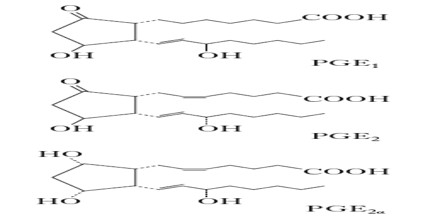
Potential Problems with Prostaglandins
Problems with prostaglandins production can occur, leading to unwanted inflammation in the body. The prostaglandins are part of a natural response to stresses, but excessive prostaglandins production can cause chronic problems with pain. Painful menstruation, arthritis, heavy menstrual bleeding and some types of cancer are all connected to excessive prostaglandins levels. Some anti-inflammatory medications work by blocking the enzymes that cause these hormones’ production, thus reducing inflammation.
Sometimes, the body will not create enough prostaglandins to heal the injury or start labor. While this is not connected to any chronic health condition, artificial prostaglandins can help. In fact, prostaglandins are sometimes used to treat stomach ulcers and glaucoma as a result.
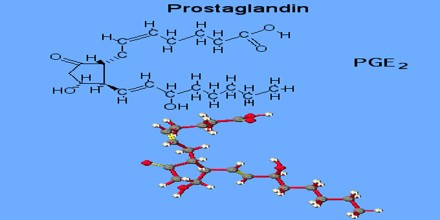
Functions of Prostaglandins
There are currently ten known prostaglandin receptors on various cell types. The diversity of receptors means that prostaglandins act on an array of cells and have a wide variety of effects such as:
- cause constriction or dilation in vascular smooth muscle cells
- cause aggregation or disaggregation of platelets
- sensitize spinal neurons to pain
- induce labor
- decrease intraocular pressure
- regulate inflammation
- regulate calcium movement
- regulate hormones
- control cell growth
- acts on thermoregulatory center of hypothalamus to produce fever
- acts on mesangial cells (specialised smooth muscle cells) in the glomerulus of the kidney to increase glomerular filtration rate
- acts on parietal cells in the stomach wall to inhibit acid secretion
- brain masculinization (in rats)
- increases mating behaviors in goldfish
Prostaglandins are potent but have a short half-life before being inactivated and excreted. Therefore, they send only paracrine (locally active) or autocrine acting on the same cell from which it is synthesized signals.
